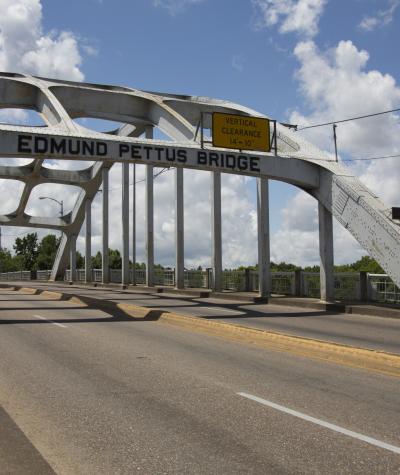Five months from now, thanks to the U.S. Supreme Court’s decision in Shelby County v. Holder, we will face the first presidential election in 50 years without the full protections of the Voting Rights Act.
The calamity of the Supreme Court’s decision can only fully be understood by looking at the Voting Rights Act’s history and all the harm to voting rights that was successfully prevented because we had Section 5 in place.
The 15th Amendment to the U.S. Constitution outlawed racial discrimination in voting in 1870. But across many parts of the country, it was the law in name only. The Jim Crow South was so recalcitrant and innovative in its efforts to disenfranchise blacks that federal lawmakers finally determined that case-by-case litigation would never result in equal opportunity to vote for blacks. Every time one provision was struck down, southern states devised and implemented new tests - such as grandfather clauses and poll taxes. For example, in Louisiana v. United States, the U.S. Supreme Court struck down Louisiana’s “interpretation” test, which gave unlimited discretion to registrars in determining who could vote. But by the time the Supreme Court issued its opinion in the case, the state had already enacted a new “citizenship” test for accessing the franchise.
Fed up with the discrimination, abuse and brutality, civil rights activists led the charge for Congress to pass the Voting Rights Act. A key provision of the Act was Section 5, which required certain jurisdictions – those determined to have a history of racial discrimination in voting – to preclear any proposed voting change with the Justice Department or a federal court in Washington, D.C. State and localities had to show that a voting change would not have a discriminatory effect on minorities before it could put it into place.
Section 5 was the turning point for voting rights in America. The Voting Rights Act eliminated the discriminatory tests in place in 1965 and Section 5 ensured that the States could not simply replace them with new discriminatory provisions. Black registration rates in the former Confederate states rebounded from 30 percentage points below white registration rates in 1960 to equal or greater than white registration rates in 2010. Black turnout in elections followed a similar pattern. The results are undeniable. In 1965, there were only five African Americans in the U.S. House and Senate combined. Today there are 48. Across all state and local offices, the change is even more remarkable. Since 1965, African-Americans went from holding fewer than a 1,000 offices nationwide to over 10,000.
But this does not demonstrate that the work of dismantling racial discrimination in voting was done. Voting continues to be intensely racially polarized and blacks, Latinos, and other minorities continue to be underrepresented at every level of government. Rather, the increases in representation, registration, and turnout show that Section 5 was slowly but surely succeeding in its goal of delivering increasing equality to minority voters.
Unfortunately, we’re now seeing what we feared without Section 5 in place. Much of the progress we achieved with Section 5 has been rolled back. States and localities are playing the same game of whack-a-mole they did in 1965. Twenty-one states have new voting restrictions— such as strict voter ID laws that disproportionately disenfranchise minority voters and cutbacks in early voting that make voting near impossible for low-income workers with less control over their schedules – since the 2010 election. Immediately after Shelby County, North Carolina passed a law ignobly dubbed the “monster” law, which tried to erect deliberate barriers to voting using every method currently available, and Texas announced its intent to enforce its voter ID law, the strictest in the nation.
These restrictions are most prevalent where minorities pose a credible threat of successfully asserting their voting power. Eight of the twelve states with the largest Hispanic population growth in the last decade passed laws making it harder to vote, as did seven of the eleven states with the highest black turnout in 2008. The NAACP Legal Defense Fund has issued a dishearteningly long tally of the discriminatory voting changes enacted since the Supreme Court’s decision in 2013.
There are two bills pending in Congress, the Voting Rights Amendment Act and the Voting Rights Advancement Act, both of which would restore a preclearance procedure to the Voting Rights Act. Thus far, Judiciary Committee Chair Congressman Goodlatte has refused to hold a hearing. But the historical lesson of Section 5 of the Voting Rights Act is clear. The preclearance procedure was uniquely effective and delivered immeasurable protections to our democracy. Protections we cannot afford to lose.
This Saturday marks the three-year anniversary of the U.S. Supreme Court’s decision in Shelby County v. Holder, which invalidated a key provision of the Voting Rights Act. This provision required the federal government to preclear any voting changes in parts of the country that have a history of discrimination in voting. This blog is part of a week-long series highlighting the devastating impact of the Supreme Court’s decision on the right to vote.

